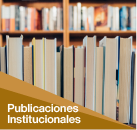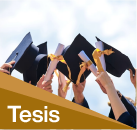Sabiduría Ancestral de Crianza del Maíz como Estrategia Pedagógica para Fortalecer el Lenguaje Oral en Educación Inicial
Fecha
2025-07-18Autor
Ramos Chosec, Patrick Anderson
Yabar Amezquita, Irina
Nivel de Acceso
Acceso AbiertoMetadatos
Mostrar el registro completo del ítemResumen
La presente investigación busca incorporar la sabiduría ancestral sobre la crianza del maíz como estrategia pedagógica en educación inicial, con el fin de fortalecer la expresión oral de niños y niñas de cinco años. Se propuso el uso de la lectura de imágenes como herramienta principal, desarrollando catorce sesiones basadas en cada etapa del cultivo tradicional del maíz. El estudio se llevó a cabo en la I.E.I. N.° 208 de Cajonahuaylla, distrito de San Jerónimo, donde aún persisten prácticas ancestrales ligadas al maíz. Estas prácticas, aunque actualmente observadas más que vivenciadas por los niños, ofrecen un valioso recurso educativo. Participaron una docente, una practicante y 24 estudiantes. Los resultados muestran que integrar saberes ancestrales en el aula fortalece la oralidad y promueve el aprendizaje significativo, además de reforzar la identidad cultural. Se recomienda replicar esta experiencia con otras prácticas tradicionales propias del contexto y promover un currículo que valore los saberes locales. Abstract
This research aims to incorporate ancestral knowledge about maize cultivation as a pedagogical strategy in early childhood education, with the goal of strengthening oral expression in five-year-old children. The use of image reading was proposed as the main tool, through the development of fourteen sessions based on each stage of traditional maize farming. The study was conducted at I.E.I. No. 208 in Cajonahuaylla, San Jerónimo district, where ancestral maize cultivation practices are still preserved. Although children currently participate more as observers, these traditions offer valuable educational opportunities. The project involved one teacher, one student teacher, and 24 students. The results show that integrating ancestral knowledge into the classroom enhances oral skills and promotes meaningful learning, while also reinforcing cultural identity. It is recommended that this approach be replicated with other traditional practices from the local context and that a curriculum valuing local knowledge be promoted.
Keywords: ancestral knowledge, early childhood education, image reading, oral expression, maize cultivation. Pisi Rimayllapi
Kay yachaykamay ruwanakuyqa maqta wawakunapaqmi ruwasqa, ñawpaq qhipa runakuna maqtakunamanta rimasqakunata allinchayta munaspa. Kay llamk'aypi suma yachay, awqa pacha maqanakuyta, ima hinaqa sara tarpuyta ima ruwanakusqanata, ñawinchay ima ruwanakuykuna kikin runakunaqa ruwasqanku kawsaymantapas, ima sumaq laya yachachinapaqmi ruwasqa. Kay llamk'ayqa Cajonahuaylla llaqtapi ruwasqa, San Jerónimo suyunpi, chaypi sarata tarpuyta ñawpaq ñawpaqman chinkayta manchakuspaña kaykuchkan. Wawakunaqa chay laya llamk'aykuna rikhukuspaña kawsanku, ichaqa kay llamk'ayta yachachiykunaqa runa simita allinchayta yachachinakunapaqmi ruwasqa. Kunan ñawpaqninchik kay yachaykamay llamk'aymanta rikuchkanmi, runa yachayninkunata yachay wasipi allinchayta atikuchkan, chaymanta rimayninkunata hinaspa kawsay rurayta riqsichinakunam chayta chaykunata. Chaymi chay llamk'ay tukuy llaqtanchikpi chay sumaq yachayninkunata yachachinapaqmi yanapanchik.
Chanin rimaykuna: yachay ñawpaqninchik, wawa yachay, ñawinchay ima ruwanakuy, runa simi rimay, sara tarpuy.
Colecciones
- Educación Inicial [22]







